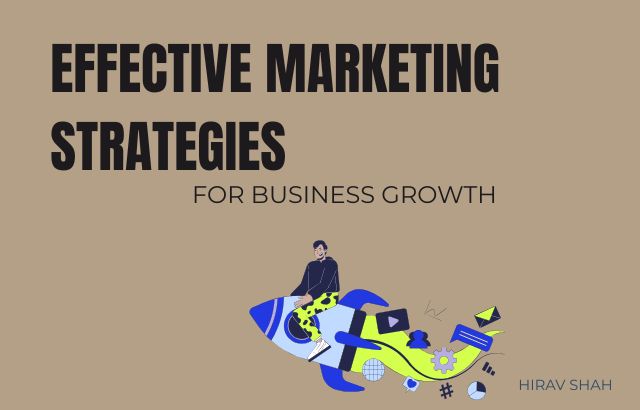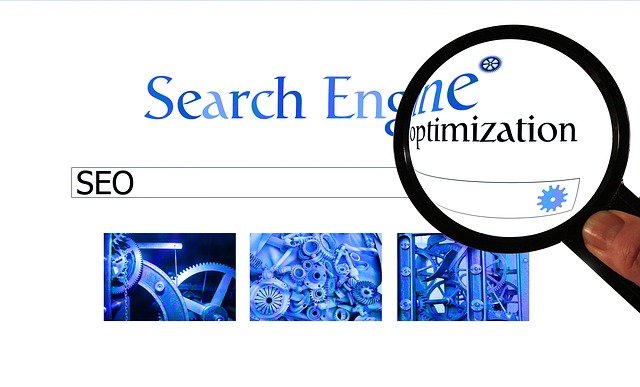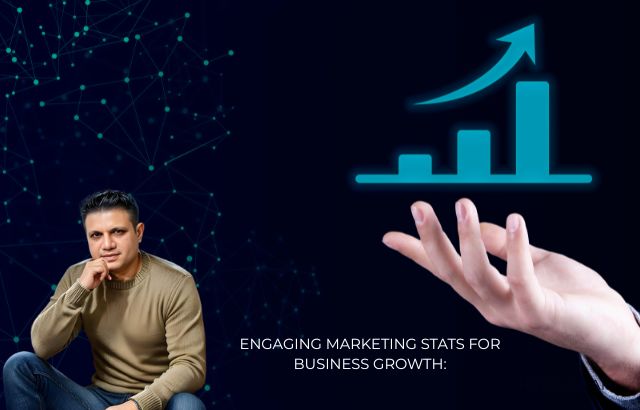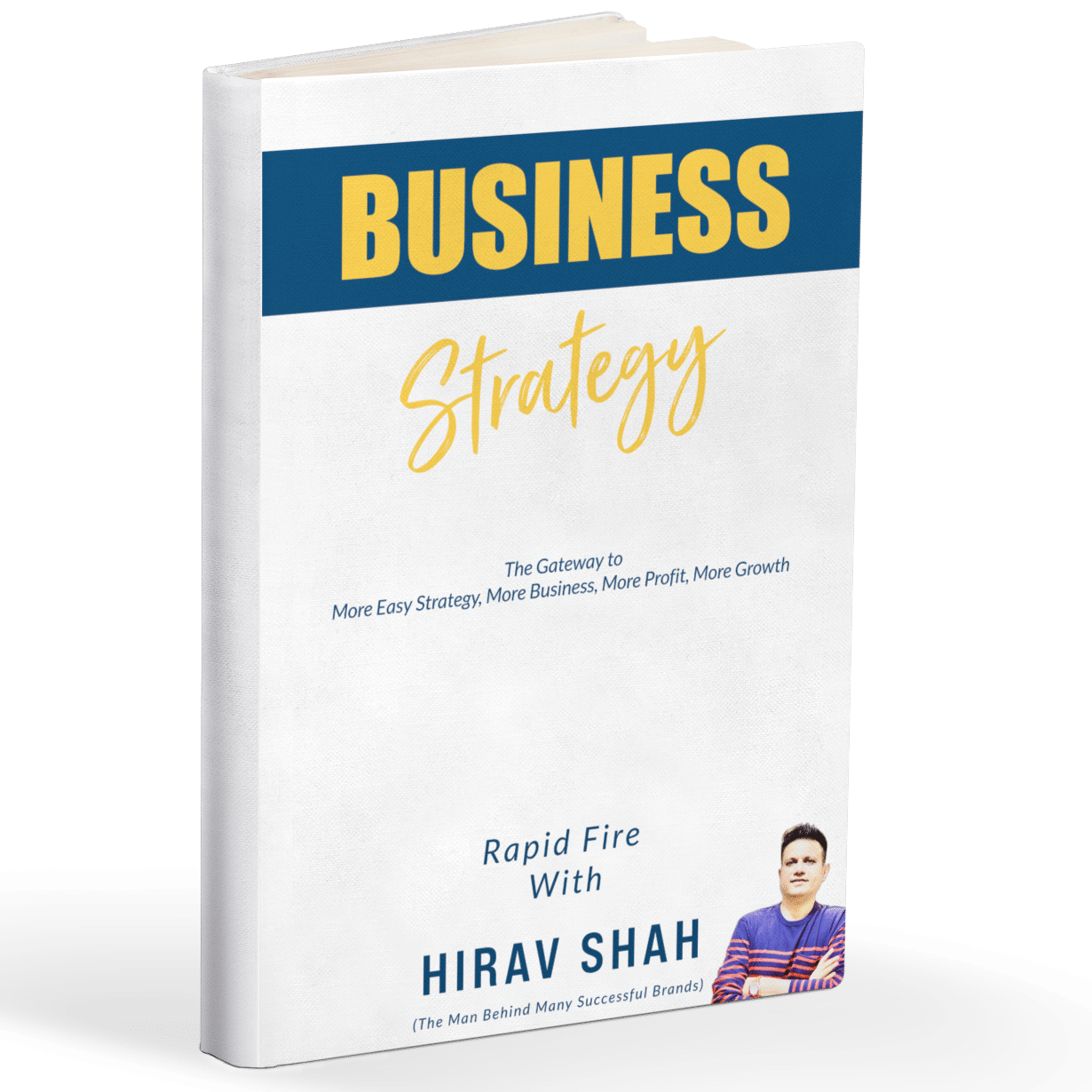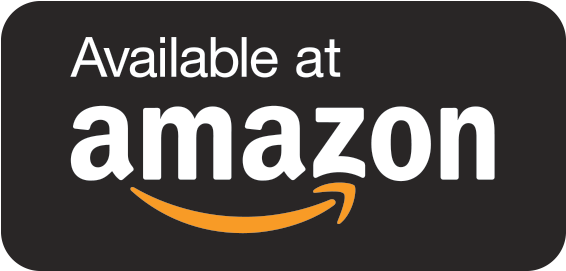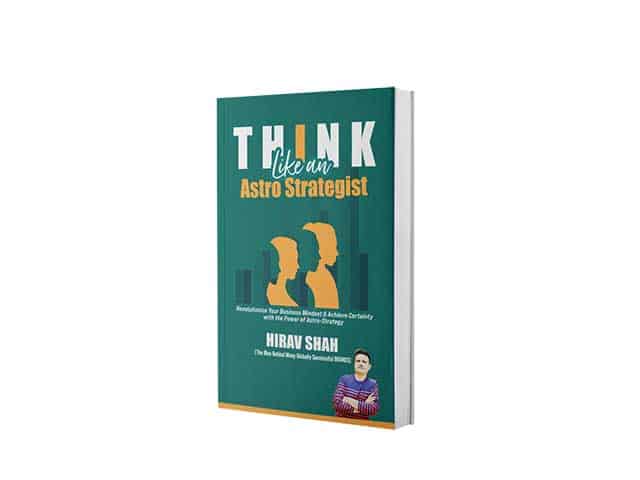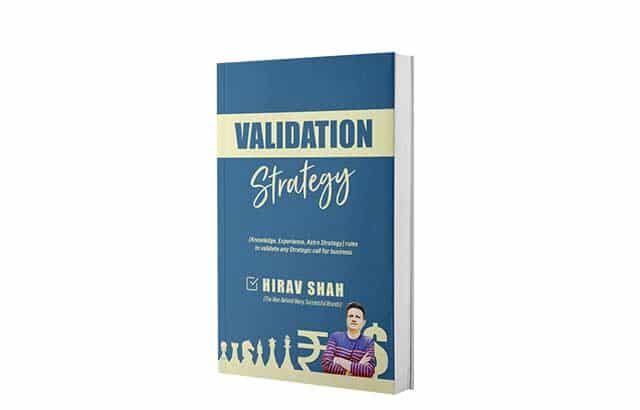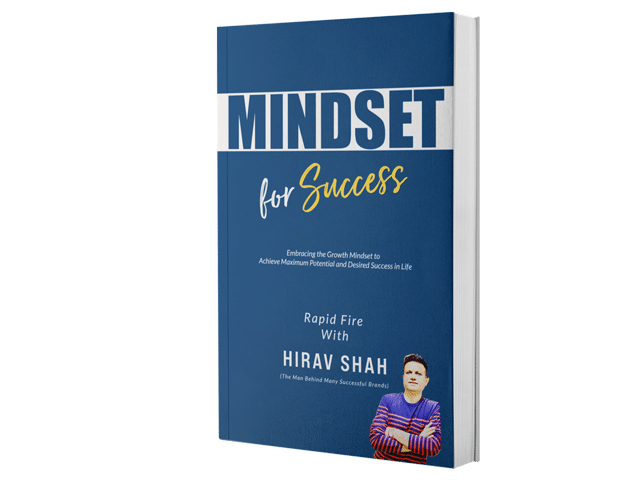Now a days that people are predominantly working from home, it won’t be wrong to say that they have shifted to online in every perspective of their life. People have found solace online, be it for professional purposes or completing office-related work or shopping.
Various businesses conducted offline do not plan to shift online. Of course, one can hire a web development company to create a digital presence. But, according to the new normal, governments ask people to sit indoors and maintain social distance as much as possible. So, if people or customers cannot come to you, you have to reach out to them.
Table of Contents
Why is Digital Marketing the solution now?

Veteran Business Transformation Expert cum Astro Strategist Hirav Shah says, “To reach out to your target audience, you need to market your products or services. If people are not aware of what you sell, it will be impossible for you to gather the desired traffic. The need for digital marketing services has become paramount now because people are locked in their houses. So, there is no better way of reaching out to them than online. Now, people are spending more time on their phones and laptops. This is why more and more companies today are joining with marketing companies to improve their reach and enhance their business growth.”
Shah adds, “Further, today, people are using social media to the utmost to connect with people now as they are not allowed to roam around in the open or maintain social distance. As a result, businesses can use this as an excellent opportunity to market themselves on social platforms and become more friendly to their target audiences.
Also, you need to acknowledge the cost-effectiveness of digital marketing. But, on the other hand, digital marketing is cheap and can cut down the marketing expense of a company. Moreover, since more people are turning to online platforms to look for items, it is easy to convert leads.”
Strategies for small businesses
As per Hirav Shah, given below are some strategies that small businesses can incorporate in their marketing strategy to improve traffic and enhance sales. These strategies can effectively improve the business standard of small businesses, especially in this uncertain situation.
1. Create an online presence
If you have not yet created an online presence, it is high time that you do it soon. As has already been discussed, people are spending more time online. Therefore, all businesses and brands should use this opportunity to reach out to the customers and trigger their demands. If required, you can take the help of a marketing company.
2. Deliver products to customers at home
It is true that businesses, regardless of their industry, have been affected immensely. But a safe delivery policy can be carried out. To understand this point, let us take the help of an example. The restaurants have sold their foods online by providing doorstep delivery services.
3. Incorporate SEO
One of the best marketing strategies is incorporating search engine optimization into your business. The potential customers discover those content and websites optimized for search engines. As a business owner, your main goal should be to ensure that your website is discoverable by the potential target audience and Google.
4. Invest in Content Marketing
One of the crucial efforts you should make your business noticeable is incorporating content marketing into it. During the uncertainty, consumers research more about the products they wish to buy than directly talking to the company professionals. Therefore, to survive in the industry, it would be wise for you to engage and educate your customers through the relevant content.
5. Make use of social media to the utmost
Today, if you do not have a presence on social media, you are missing out on a lot of traffic. To reach out to customers more, use relevant social media platforms to engage customers as much as possible. For example, you can conduct some polls or upload interesting posts to grab the customers’ attention.
6. Offer vouchers and gift cards
Customers are more intrigued by the offers that companies provide them. However, you have to keep in mind that you are aspiring to thrive in your business during this unpredictable situation. Along with you, the customers are also suffering. Therefore, along with the products they buy, provide vouchers and gift cards which will remind them of you later on and they will surely come back to you again.
7. Pay attention to retargeting
People who have visited your site once are likely to revisit them provided you retarget or remarket your products or services to them. Many customers leave the buying process in between. Retargeting is beneficial for these customers as it will poke them and trigger them to buy the product finally.
8. Promote items in demand
It has been noticed that the demand for home appliances has experienced a sudden hike. Therefore, to generate more sales, it would be wise to focus and promote the items that help in the household chores. You can also provide discounts on these essential commodities to lure customers if required.
9. Video streaming
From time immemorial, visuals have always gained more popularity than written text. Therefore, if you want to promote any offers to your potential target market, you can create an exciting and attractive video and promote it on social media platforms. Also, sending newsletters to customers can be an effective means of promoting your business or brand.

Hirav Shah concludes by saying, “Therefore, whatever be the situation in the outside world, you have to survive. If you have to accommodate new strategies for survival, so be it. It is better to stay by capturing new techniques than dying down entirely and shutting off everything.”
Frequently Asked Questions (FAQs) on Effective Marketing Strategies for Business Growth
1. What is the most important aspect of a marketing strategy for business growth?
Answer: The most important aspect of a marketing strategy is understanding your target audience. Knowing who they are, what they need, and how they make decisions is critical. Once you understand this, you can tailor your messaging, channels, and tactics to attract and retain them effectively. A strong value proposition, clear brand positioning, and customer-centric content are key drivers of sustainable growth.
2. How can I measure the effectiveness of my marketing efforts?
Answer: Key Performance Indicators (KPIs) are the best way to track the effectiveness of your marketing strategy. These might include metrics like customer acquisition cost (CAC), return on investment (ROI), conversion rates, customer lifetime value (CLV), engagement rates, and sales growth. A combination of both short-term and long-term KPIs will provide you with a balanced view of performance.
3. What role does digital marketing play in business growth?
Answer: Digital marketing plays a pivotal role in today’s business growth because of its ability to reach a global audience with precision and scalability. Channels like social media, email marketing, content marketing, SEO, and paid ads offer measurable results and are cost-effective compared to traditional marketing. It also allows businesses to engage in two-way communication with their customers, gather data, and continually optimize efforts.
4. Should I focus on brand awareness or lead generation?
Answer: Both are important, but the focus depends on your business stage. For new businesses or businesses launching new products, brand awareness campaigns are essential to build credibility and recognition. If your business is established and you have a strong brand presence, lead generation becomes more crucial for converting awareness into customers. Ideally, a balanced approach of both will create a steady pipeline for long-term growth.
5. How can I differentiate my business in a crowded market?
Answer: Differentiation comes down to offering unique value that competitors don’t. Start by identifying a niche or a specific problem your product or service solves in a way that others don’t. You can also differentiate through superior customer service, a unique brand voice, or a personalized experience. Focus on customer-centric strategies—listening to customer feedback and constantly innovating can set you apart.
6. What are some cost-effective marketing strategies for small businesses?
Answer: For small businesses, leveraging organic strategies such as content marketing (blogging, SEO, social media posts) and word-of-mouth marketing can be highly effective without a large budget. Networking through online communities, collaborations, or partnerships can also expand your reach. Don’t underestimate the power of email marketing—it’s one of the most affordable ways to engage with existing and potential customers.
7. How important is data in shaping my marketing strategy?
Answer: Data is absolutely critical. It informs almost every decision in a marketing strategy—from understanding customer behavior to testing campaign effectiveness. Use analytics tools to track website traffic, customer interactions, and conversion patterns. This helps you optimize campaigns in real-time, predict trends, and avoid wasted resources. A data-driven approach is essential for scaling efficiently.
8. How can I create a marketing plan that aligns with my business goals?
Answer: Start by defining clear, measurable goals for your business (e.g., increasing sales, growing your customer base, improving brand loyalty). From there, align your marketing tactics to support these objectives. If your goal is to increase brand awareness, you might prioritize social media ads, influencer partnerships, or PR. If you’re focused on increasing sales, you might implement targeted email campaigns, special promotions, or content that drives conversions.
9. What is the role of customer retention in business growth?
Answer: Customer retention is just as important, if not more so, than customer acquisition. It’s generally cheaper to retain existing customers than to acquire new ones. Building loyalty through consistent engagement, excellent customer service, personalized offers, and a quality product or service leads to repeat business and referrals, which are vital for long-term growth.
10. How can I stay ahead of trends and adapt my marketing strategy accordingly?
Answer: Staying ahead of trends requires a combination of vigilance and flexibility. Regularly track industry news, competitor actions, and changes in consumer behavior. Participate in webinars, conferences, and forums to gain insights. Be open to adjusting your marketing plan based on new technologies or changing consumer expectations. Agility is key—test and iterate regularly to keep pace with shifts in the market.
11. How do I balance creativity with data-driven decisions in marketing?
Answer: Creativity and data don’t have to be at odds—they should complement each other. Data provides the foundation for understanding your audience and measuring success, while creativity brings the human element to your campaigns. Use data to test which messages or visuals resonate, and let creativity drive engagement through storytelling and innovative ideas. A combination of both leads to campaigns that are both effective and memorable.
12. Should I invest in paid advertising or organic methods?
Answer: A mix of both is usually the best approach. Organic methods (like SEO, content marketing, and social media engagement) build long-term value and trust, while paid advertising (like Google Ads or Facebook Ads) provides quick results and helps you reach a larger audience. Paid ads can also support organic efforts, especially in competitive industries. A strategic blend allows you to achieve immediate results while building a sustainable online presence.
13. What’s the role of influencer marketing in business growth?
Answer: Influencer marketing can be highly effective when aligned with your target audience and brand values. Influencers can help amplify your message and provide social proof, particularly if they have an engaged following that trusts their recommendations. It’s important to select influencers whose audience aligns with your business goals and product offerings for maximum ROI.
14. What are the risks of focusing too much on one marketing channel?
Answer: Relying too heavily on one marketing channel (e.g., social media, SEO, or paid ads) can leave your business vulnerable to shifts in algorithms, platform changes, or market saturation. Diversifying across multiple channels reduces this risk and ensures you’re reaching different segments of your audience. A multi-channel approach also allows for greater testing and optimization of various marketing tactics.
15. How can I effectively communicate my brand message?
Answer: Clear and consistent communication of your brand message is essential for building recognition and trust. This includes crafting a compelling value proposition, using storytelling that resonates with your audience, and maintaining a consistent voice across all channels. Ensure your messaging aligns with customer needs and highlights how your product or service addresses those needs better than anyone else.
Sure! Here’s a list of engaging marketing stats that are eye-catching and highlight the power of well-executed marketing strategies:
Engaging Marketing Stats for Business Growth:
- 94% of consumers say that a positive customer experience makes them more likely to purchase again.
- Source: CX Network
A reminder that your customers’ experience is your strongest marketing tool—happy customers bring repeat business!
- Source: CX Network
- Email marketing has an average ROI of 4,400%.
- Source: Campaign Monitor
If you’re not using email marketing effectively, you could be leaving a lot of money on the table.
- Source: Campaign Monitor
- 64% of consumers make a purchase after watching a branded social video.
- Source: Tubular Insights
Video content is king, especially when it comes to driving conversions.
- Source: Tubular Insights
- 70% of marketers say that SEO is more effective than PPC for driving sales.
- Source: HubSpot
Organic search is the backbone of long-term growth—SEO shouldn’t be ignored.
- Source: HubSpot
- 41% of small businesses invest in social media marketing, and 73% of them say it has been effective.
- Source: Small Business Trends
Social media is a cost-effective way to build a loyal following and see real results.
- Source: Small Business Trends
- Content marketing costs 62% less than traditional marketing and generates 3x as many leads.
- Source: Demand Metric
The ROI of content marketing is undeniable, and the best part? It’s scalable.
- Source: Demand Metric
- 92% of marketers believe that influencer marketing is an effective form of marketing.
- Source: Influencer Marketing Hub
Influencer marketing continues to grow, with the trust factor being a huge reason why it works.
- Source: Influencer Marketing Hub
- Companies with blogs receive 67% more leads per month than those without blogs.
- Source: HubSpot
Blogging is not only great for SEO, but it positions your brand as an authority in your field.
- Source: HubSpot
- Social media ads boost brand awareness by 80%.
- Source: HubSpot
Social ads aren’t just for selling—they can do wonders for getting your name out there.
- Source: HubSpot
- Businesses that prioritize customer experience see a 60% higher profit margin.
- Source: Forrester
A satisfied customer isn’t just loyal—they’re also profitable.
- Source: Forrester
- Mobile devices account for 54.8% of all global website traffic.
- Source: Statista
If your site isn’t optimized for mobile, you’re missing out on over half your potential audience.
- Source: Statista
- 84% of people trust online reviews as much as personal recommendations.
- Source: BrightLocal
Your customers’ voices are more powerful than ever—good reviews can become your best marketing tool.
- Source: BrightLocal
- 77% of buyers are more likely to buy from a company that offers personalized content.
- Source: Salesforce
Personalization isn’t just a nice-to-have; it’s a must-have for conversion.
- Source: Salesforce
- The average person spends over 2 hours a day on social media.
- Source: Hootsuite
If you’re not leveraging social media, you’re missing a huge window of opportunity to connect.
- Source: Hootsuite
- 93% of buying decisions begin with an online search.
- Source: Forbes
If your business isn’t visible in search results, you’re invisible to potential customers.
- Source: Forbes
- Content marketing generates three times more leads than outbound marketing but costs 62% less.
- Source: Demand Metric
High-quality content is not just cost-effective; it’s one of the best lead-generation tools available.
- Source: Demand Metric
- 65% of consumers say they trust a business with a personalized email.
- Source: Epsilon
Personalized emails create trust and build a stronger connection with your audience.
- Source: Epsilon
Final words
Effective marketing strategies are essential for driving growth, building customer loyalty, and staying ahead of the curve. The statistics make it clear—whether you’re focusing on content marketing, leveraging social media, optimizing for SEO, or delivering personalized experiences, the return on investment is undeniable.
By understanding your audience, embracing data-driven decisions, and adapting to evolving trends, businesses can maximize their marketing efforts and see tangible results. Remember, marketing isn’t just about pushing products; it’s about creating lasting relationships, building trust, and providing value that resonates with customers.
Incorporating a mix of traditional and innovative marketing tactics—along with a focus on delivering exceptional customer experiences—will position your business for long-term success. The data speaks for itself: with the right strategies in place, growth is not just a possibility, but an inevitable outcome.
Now is the time to embrace these insights and transform your marketing approach into a powerful engine for business growth!

